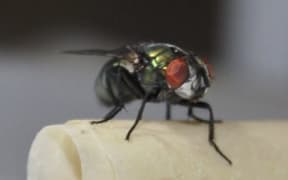Some farmers are questioning why overseas efforts to tackle flesh-eating blowflies were not tried in New Zealand and Australia sooner.
Australian and American scientists have just mapped the genome of the Australian blowfly, or Lucilla Cuprina, as part of efforts to find effective control measures for the damaging pest and the disease, flystrike.
Former Canterbury sheep farmer Robert Johnston questioned why scientists did not try to sterilise the Australian male blowfly's population, which was a successful method in eradicating the screw worm blowfly in the United States.
But AgResearch an emeritus scientist with Allen Heath, who spent more than 40 years researching the Australian blowfly, said that method was unsuccessful.
"I can refer back to work that was done in Australia in the 80s by a guy called Geoff Foster, who set up a large lab and a fly production building in Canberra to produce sterile male flies to attack the Australian sheep blowfly," he said.
"They released uncountable millions into the population and they did have some success on localised and confined populations on islands but once those vast numbers of flies were released into the open area in Australia they just dispersed and other flies, non-sterile flies, just came in to fill the gap, so it became a very expensive and ultimately a rather frustrating exercise."
Dr Heath said decoding the fly's genome was a significant step but it did not mean a quick fix for controlling the parasite.


